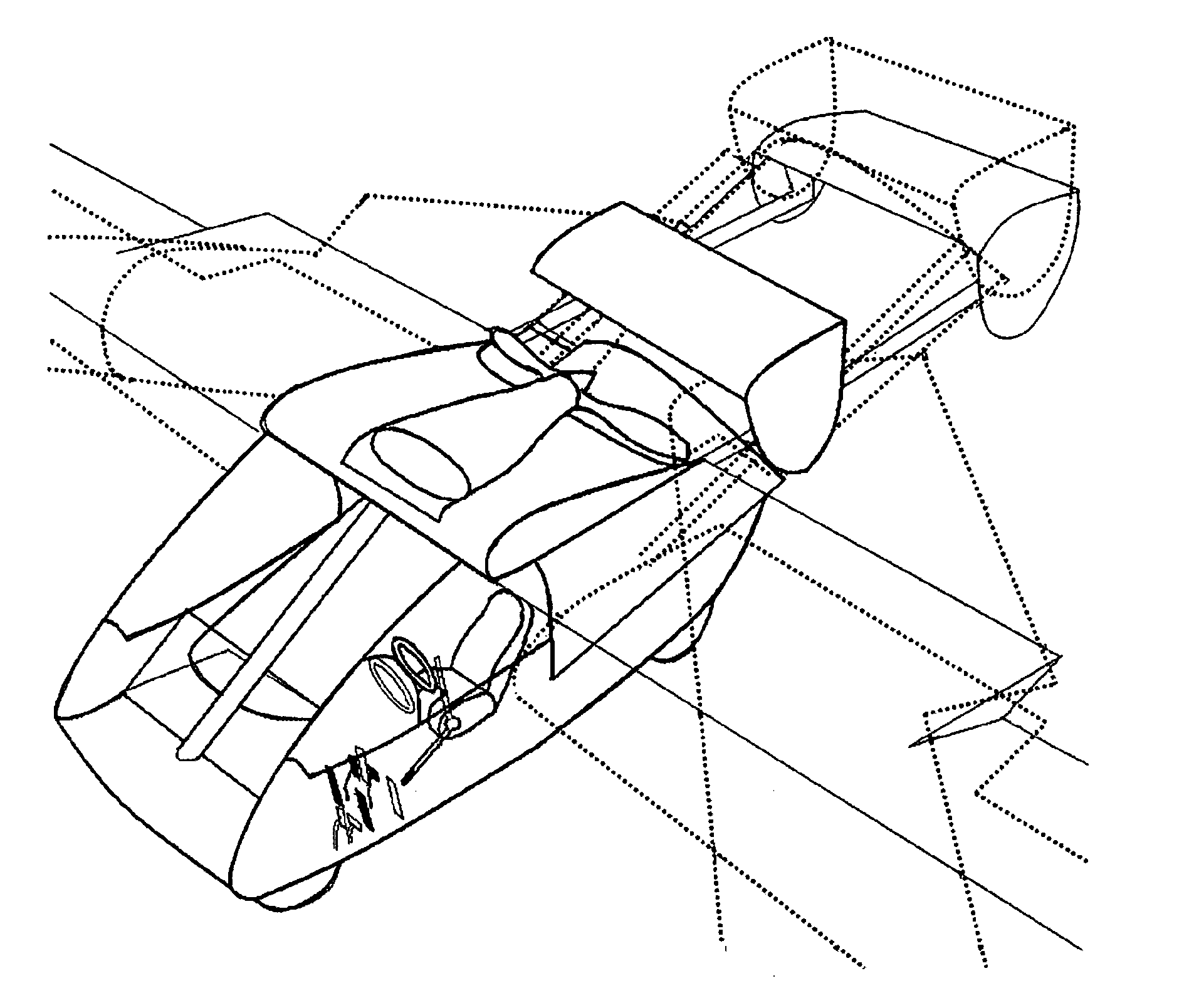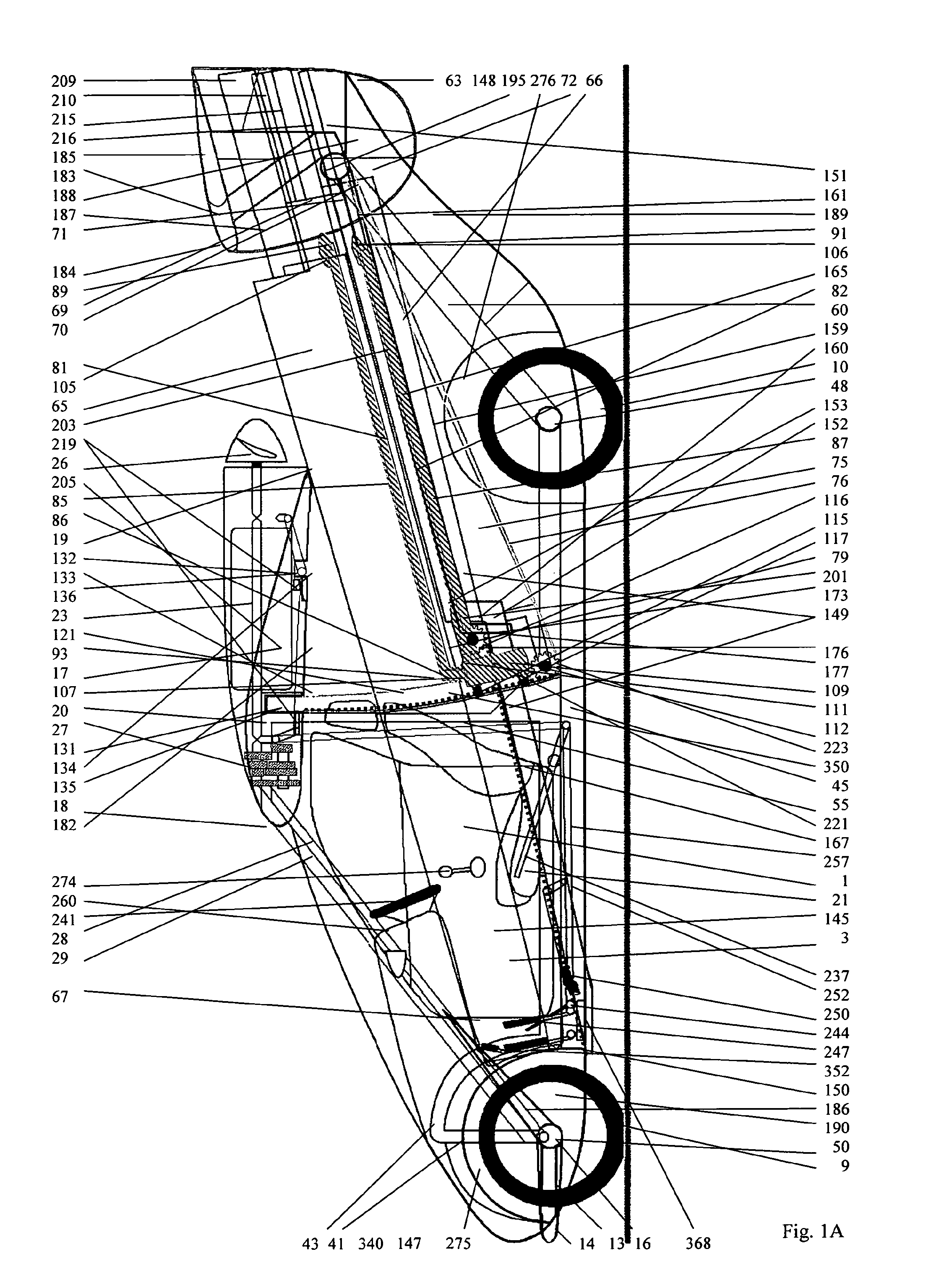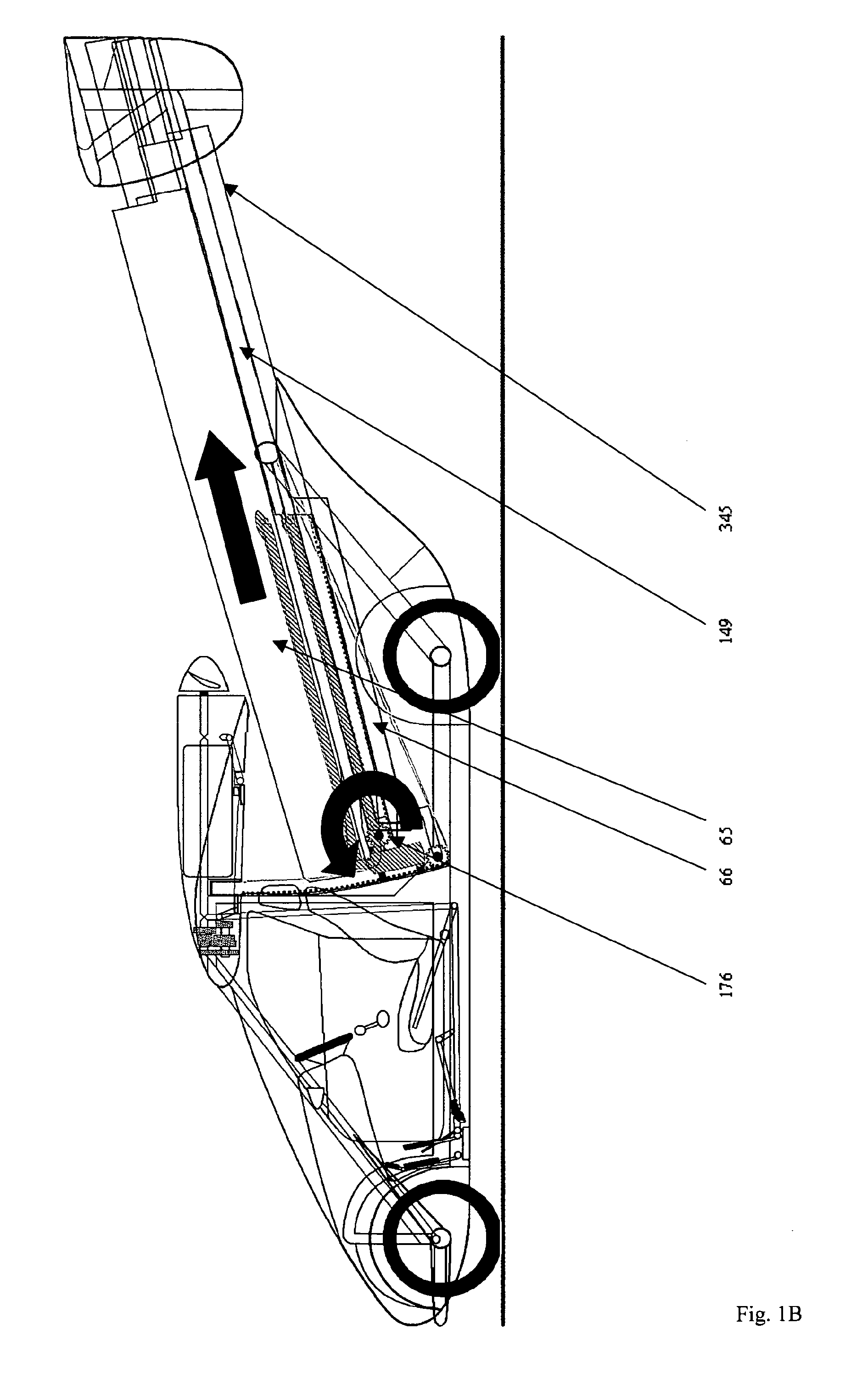Combined air, water and road vehicle
a combined air and road vehicle technology, applied in the direction of convertible aircraft, aircraft components, convertible vehicles, etc., can solve the problems of unsolved one-person solutions, unresolved road transportation legal or impractical, and difficulty in fitting one-person solutions into a vehicle only 2.55 m wide, so as to reduce the risk of mechanical failure, reduce the risk of confusion of controls, and reduce the stall speed
- Summary
- Abstract
- Description
- Claims
- Application Information
AI Technical Summary
Benefits of technology
Problems solved by technology
Method used
Image
Examples
Embodiment Construction
[0143](a Reference Key Denoting the Terms Used Herein is Found at the End of this Section)
[0144]With reference to the attached drawings, the invention disclosed here in its preferred embodiment as a non-restrictive example is a vehicle comprising two separate “bodies”, “hulls” or fuselages 1,2. Each fuselage contains a cabin 145, 146 for one occupant (for a total of two occupants). Each cabin is accessible via a front-hinged door 3,4 located on the outer sides of the vehicle 337,338 (for a total of two doors).
[0145]The fuselages 1,2 are parallel to each other in line with the forward direction of movement 340. Underneath each fuselage 1,2 are two wheels (for a total of four wheels) 9,10,11,12. The wheels 9,10,11,12 are placed one behind the other along the underside of each fuselage. Only the lower part of each wheel emerges from the underside of the fuselage.
[0146]The fuselages 1,2 are connected to each other at two main points. At the lower front of the vehicle between the front w...
PUM
 Login to View More
Login to View More Abstract
Description
Claims
Application Information
 Login to View More
Login to View More - R&D
- Intellectual Property
- Life Sciences
- Materials
- Tech Scout
- Unparalleled Data Quality
- Higher Quality Content
- 60% Fewer Hallucinations
Browse by: Latest US Patents, China's latest patents, Technical Efficacy Thesaurus, Application Domain, Technology Topic, Popular Technical Reports.
© 2025 PatSnap. All rights reserved.Legal|Privacy policy|Modern Slavery Act Transparency Statement|Sitemap|About US| Contact US: help@patsnap.com



